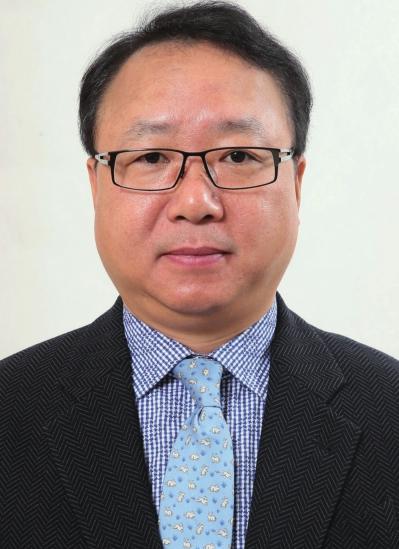The goal:Striving to be a textile powerhouse

This year, 70 years after the founding of New China, the Chinese nation has made a historic leap from standing up to becoming rich and strong. In this great change, the textile industry has achieved all-round and deep-seated development, playing an increasingly important role in serving the overall strategic situation of the country.
Textile industry is one of the industries with the greatest potential to take the lead in joining the ranks of the worlds manufacturing powers. In 2018, China fiber processing volume was about 54.6 million tons, accounting for more than half of the worlds total, China textile and apparel exports amounted to 276.73 billion US dollars, accounting for more than 36% of the worlds total. From raw material supply, design and research, to textile dyeing and processing, garment manufacturing, operation and retail, Chinas textile industry has formed the large and complete industrial system in the world. It is an industrial sector with independent innovation ability of the whole industrial chain. It has been catching up with the advanced technology in the fields of high-performance and high-functional fibers, equipment manufacturing and so on. Since 2011, 23 achievements of the industry have been obtained national science and technology academic awards, including two first-class national prizes for scientific and technological progress.
Textile industry is an important industrial force for stable growth, employment promotion, improvement in peoples livelihood and risk prevention in the national economy. Chinas textile industry has never wavered in its position as a pillar industry. In 2018, the main business income of textile enterprises above designated size reached 5,370.35 billion yuan, accounting for 5.3% of the national industries above designated size, net foreign exchange earned 250.19 billion US dollars, accounting for 71.1% of the country. Industry foreign exchange earning plays a constructive role in maintaining currency stability, balancing international payments, ensuring economic and financial security, and serving the national development strategy. In the areas of peoples livelihood, the problem of clothing has been solved thoroughly. Over 20 million people are employed in the whole industry, providing more than 10 million jobs for rural migrant workers every year. The status of peoples livelihood industry is becoming increasingly prominent.
Textile industry is an important industry platform to build up cultural self-confidence and promote the construction of human destiny community. Textile and apparel, as a cultural carrier, contains a countrys cultural traditions and values. Promoting the right of fashion discourse is an important way to build up cultural self-confidence. In recent years, the international influence of Chinese clothing brands such as Li-Ning, Bosideng and ANTA has been sig-nificantly enhanced, Chinese designers have begun to move to the center of the world stage, and Chinese elements and designs are gaining more and more recognition. The textile industry is the focus area of the international high-quality capacity cooperation on the“Belt and Road”, which has effectively promoted the industrialization process of the host country and the development of related industries. As the first industry in China to institutionalize social responsibility, textile industry plays an important role in promoting multi-dimensional responsibility co-governance in the global industrial chain.
Facing the future, the industry should maintain its strategic strength and implement the industry orientation of “science and technology, fashion and green”.“innovation-driven science and technology industry, culture-led fashion industry and responsibility-oriented green industry” should become the strategic focus of textile industry to promote high-quality development. To rectify the social cognitive bias towards the industry, there are traditional economic contents in the new economy and new productive forces in mature industries. We should speed up the upgrading of independent innovation capability and innovation quality, tackle key technologies in materials, equipment and other fields. Take “masters, brands and events” as the starting point, build fashion ecology, strengthen trend research, fashion design and brand building, establish cultural self-confidence, and cultivate consumer market. Taking human-based responsibility, environmental responsibility and market responsibility as the content, we should deepen the construction of industry social responsibility and build a green supply chain.
Facing the future, the industry should accumulate momentum for development and do a good job in building a contingent of “educating, employing and cultivating people”. The essence of innovation drive is talent drive. The key to innovation development is talent development. We should focus on people and train all kinds of talents needed for the development of industries, including industrial workers, entrepreneurs, scientists and designers.
Facing the future, the industry should stimulate the vitality of resources and improve the productivity layout of “cluster, intensive and crossover”. On the one hand, we should enhance industrial concentration, cultivate a number of world-class textile and apparel enterprises with international competitiveness, and cultivate individual champions in the field of industry segmentation. On the other hand, we should foster a platform-based economy and promote the development of large, medium and small enterprises. Crossover development should focus on promoting the integration of advanced manufacturing and modern service industries, we will deepen the integration of informatization and industrialization, industrial and financial cooperation and civil-military integration, and integrate resources to promote technological, product, application and mode innovation.
- China Textile的其它文章
- Dear readers
- Positive outlook for China textile and apparel industry
- Green ecology leads the way of sustainable development
- Current situation of denim industry in China
- Gu Ping elected as President of China Textile Machinery Association
- The 12th Asia Chemical Fiber Industries Federation Conference 2019 showed you the report of Asian chemical fiber industry

